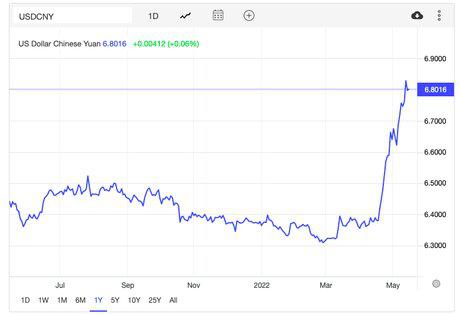Was one of the last direct messages you received on Instagram a video of ducklings wearing flowers for hats or swimming in a sink full of water? Or a Cockapoo dog really too happy to dance on the sofa with his human? A Husky throwing a tantrum because he can't fit in the house?
If you love sharing cute animal content, know that you are not alone: you are part of a vast cultural phenomenon called the cute economy.
It consists not only of a network of people who create, share and circulate content, but also of a multi-billion dollar industry that has come into existence through the ability of creators to monetize posted content.
Media researcher James Meese defines the cute economy as the creation and circulation of user-generated content showing things (animals, babies, plants, objects, etc.) perceived as cute.
Even though researchers and journalists are shedding light on this social media phenomenon, sharing photos of cute animals is nothing new: over a hundred years ago, photographer Harry Whittier Frees had created innovative postcards of anthropomorphic animals.
View this post on InstagramA post shared by Shortcake (@theladyshortcake)
Our research focuses on a specific but quite important segment of this economy: the one that distributes animal content. We have found that the cuteness of animal content comes from different archetypes: quirky or corny animals, babies or young animals, multi-species content, child-animal pairs, extreme sizes and proportions (very small or very large), unusual appearances and animal behaviors that we interpret as human.
If some animal accounts have more followers than politicians and celebrities, and can thus generate their own virality - like Jiff Pom with 9.9 million followers, Nala with 4.3 million followers , Doug the Pug with 3.9 million subscribers and Juniper with 3 million subscribers - the circulation of cute animal content is also catalyzed by meme accounts or featured accounts. These, like this one from Matt Nelson's cross-platform company WeRateDogs, reuse content and curate it.
Like influencer mothers creating social media accounts about their babies, pet parents also create social media accounts to show off their domesticated companions.
Since people were already humanizing their pets before the birth of the internet, ensuring a pet's presence on social media is a lot like pretend play.
Pet account managers visually humanize their furballs through clothing, accessories, or ornaments. They also humanize them textually, giving them a human-sounding voice.
Content creators are even adding species-specific vocabulary like cat talk, also known as meowlogism, or infantilized language like lolspeak - internet slang that originated from lolcat memes.
View this post on InstagramA post shared by Nala Cat ™ (@nala_cat)
There is still a limit to cuteness. Several participants interviewed as part of our research indeed explained that even if anthropomorphism is cute, behaviors that seem forced or inauthentic will make them feel the opposite.

In fact, many creators have understood this and are making sure that their content does not become cringe-inducing.
Read also: Croquettes, mash, health… these start-ups that cuddle our dogs and cats
One of the interviewees (who manages an account for his turtle) expressed his embarrassment and uncertainty about the creation of subtitles. She says it's hard to find “a balance between what makes your teeth cringe and what entertains. »
Cultivating relationships: Cute content is shared because it provides an experience that people identify with. It is also a sign of caring and closeness in a relationship.
Another interviewee knows that her daughter-in-law loves horses, so sends her targeted content. In our view, this gesture shows that the sender knows what will please the recipient.
Aspire to a future: Watching “cute” content can be a form of ambition. For example, one of the interviewees hopes to adopt a dog when she moves into a building that accepts animals. She is dedicated to following accounts that feature lifestyles she aspires to, such as The Golden Ratio.
Experience an interspecies connection by proxy: The “cute” content makes its consumers happy because it allows them to interact with animals at a distance, without the need to allocate resources to take care of them.
Another interviewee, who loves otters, avidly consumes online content on the subject, but is neither interested in domesticating one nor learning how to do so.
Serving a cause: Cute content can serve as a driver of change. A creator or an appreciator can share content to raise awareness of a cause or to change the opinion of others.
For example, one of the interviewees manages the account of his domesticated duck. In it, she shows her pet as being kind, loving and endowed with a unique personality, like any other pet. Thanks to her duck account, she wants to show her subscribers the harmful effects of speciesism, and fights for a cruelty-free coexistence with all animals.
Studies have shown that videos of cute animals are good for your mental health.
Whether you're a creator, an appreciator, or both, cute content helps start conversations and facilitate relationships: it breaks the ice when people run out of things to talk about or when they want to show others their empathy.
Given the inability of people to come together as frequently and closely as before due to the pandemic, we were able to share our love from a distance thanks to these small tokens of caring.
TESTIMONY - “We are full-time pet-sitters”
The ability to strengthen social ties through technology is a valuable asset. But just as not everything can be pretty, there is a dark side to the cute economy, so be careful not to share content from animals that may have been exploited.
This article is republished from The Conversation under a Creative Commons license. Read the original article.








